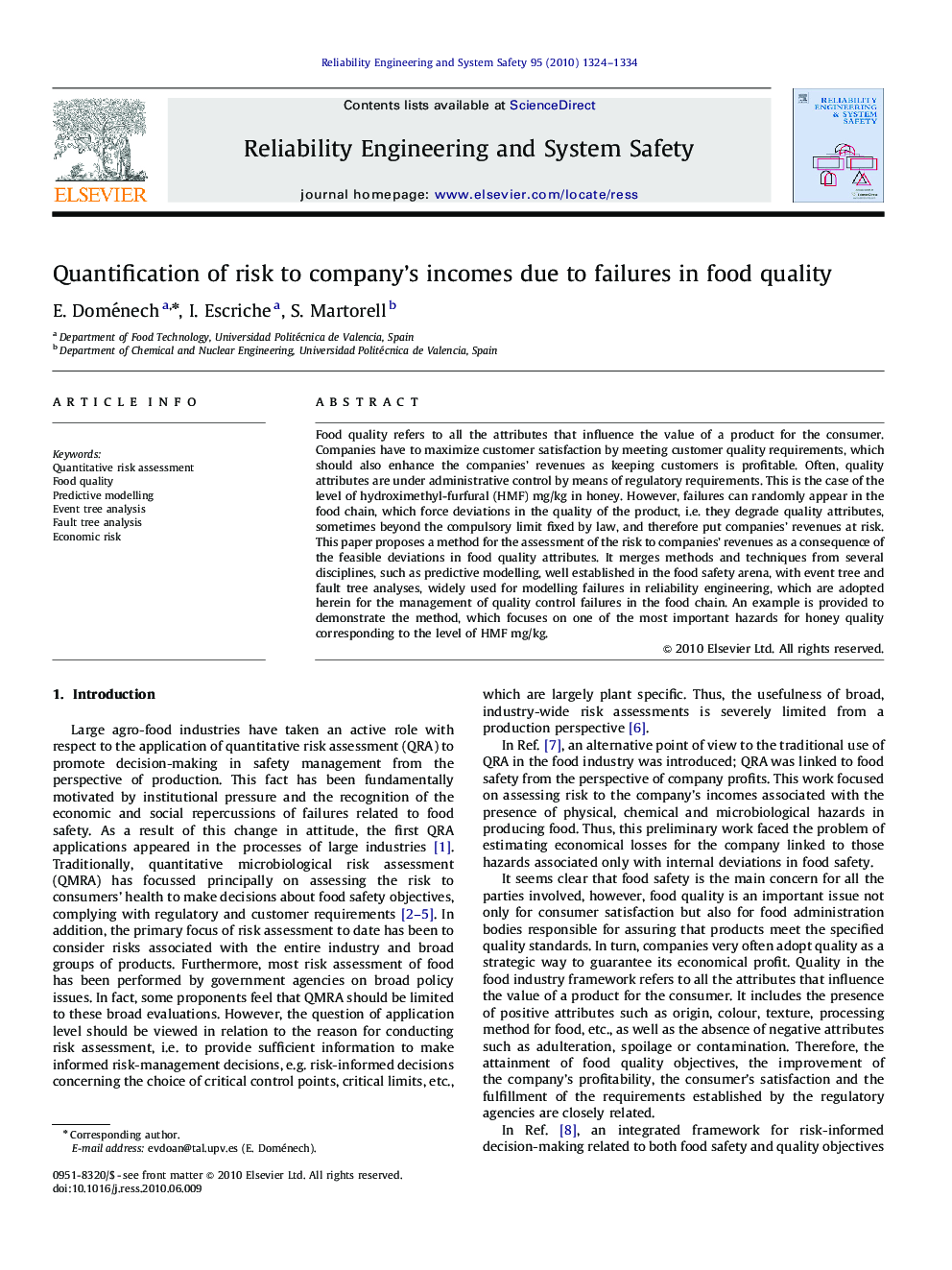| Article ID | Journal | Published Year | Pages | File Type |
|---|---|---|---|---|
| 808007 | Reliability Engineering & System Safety | 2010 | 11 Pages |
Food quality refers to all the attributes that influence the value of a product for the consumer. Companies have to maximize customer satisfaction by meeting customer quality requirements, which should also enhance the companies’ revenues as keeping customers is profitable. Often, quality attributes are under administrative control by means of regulatory requirements. This is the case of the level of hydroximethyl-furfural (HMF) mg/kg in honey. However, failures can randomly appear in the food chain, which force deviations in the quality of the product, i.e. they degrade quality attributes, sometimes beyond the compulsory limit fixed by law, and therefore put companies’ revenues at risk. This paper proposes a method for the assessment of the risk to companies’ revenues as a consequence of the feasible deviations in food quality attributes. It merges methods and techniques from several disciplines, such as predictive modelling, well established in the food safety arena, with event tree and fault tree analyses, widely used for modelling failures in reliability engineering, which are adopted herein for the management of quality control failures in the food chain. An example is provided to demonstrate the method, which focuses on one of the most important hazards for honey quality corresponding to the level of HMF mg/kg.
